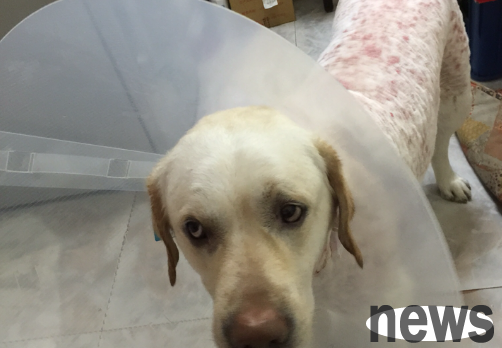Common clinical allergies in dogs are: food allergies and drug allergies. Generally manifested as acute or chronic skin and gastrointestinal diseases, or one of both. There is no seasonal incidence. Dogs of all ages and breeds can occur, and dogs un...
Common clinical allergies in dogs are: food allergies and drug allergies. Generally manifested as acute or chronic skin and gastrointestinal diseases, or one of both. There is no seasonal incidence. Dogs of all ages and breeds can occur, and dogs under 1 year old tend to occur more often.
The characteristics of this reaction are: rapid attack, strong reaction, and rapid decline. Generally, it will not damage tissue cells, nor will it cause tissue damage, and there are obvious genetic tendencies and individual differences.

1. Causes of dog allergies:
The antigen that induces dog allergic reactions is called allergen. Allergens are a necessary condition for the occurrence of allergies. There are 2,000-3,000 common antigenic substances that cause allergic reactions, and nearly 20,000 medical records are recorded. They cause allergies to the body through inhalation, inhalation, injection or contact. Common allergens are as follows:
1. Inhaled allergens: such as pollen, catkins, dust, mites, animal dander, oil, paint, car exhaust, gas, cigarettes, etc.
2. Ingestive allergens: such as milk, eggs, fish and shrimp, beef and mutton, seafood, animal fat, allogeneic protein, alcohol, drugs, antibiotics, anti-inflammatory drugs, sesame oil, essence, onion, ginger, garlic, and some vegetables and fruits.
3. Contact allergens: such as cold air, hot air, ultraviolet rays, radiation, cosmetics, shampoo, dishwash, hair dye, soap, chemical fiber supplies, plastic, metal jewelry (watches, necklaces, rings, earrings), bacteria, mold, viruses, parasites, etc.
4. Injectable allergens: such as penicillin, streptomycin, heterogeneous serum, etc. Penicillin is the first drug that causes drug allergies in dogs and cats; the others are sulfonamide drugs, greyofomycin, cytosine and sulfadimethylisoxazole. For example: surface peeling caused by quinidine; bulligus caused by phenytoin: purpura caused by chloramphenicol: urticaria caused by tetracycline: fixed drug rash caused by ambicillin, etc.
5. Self-tissue antigen: Self-tissue antigen that changes structure or composition due to biological and physical and chemical factors such as mental stress, work pressure, and changes in structure or composition due to biological and physical and chemical factors such as microbial infection, ionizing radiation, and burns.
2. Clinical symptoms of dog allergy:
a), Food allergy:
Make a diagnosis based on medical history and clinical symptoms. In addition, feeding suspicious food can be stopped for diagnosis.
1. Skin-type food allergies. Usually, after dogs eat, they usually have itching throughout the body, or erythema papules and scales in the skin throughout the body, hair loss, epidermal loss or ulcers, urticaria and angioedema, pustules and otitis-like symptoms.
2. Gastrointestinal symptoms are mainly water diarrhea and vomiting after eating, mild inflammation of the intestines, severe hemorrhagic colitis, and bloody stools.
3. Gastrointestinal and skin types sometimes occur at the same time, but most of them are single.

b), Drug allergy:
Through medical history investigation, referring to clinical symptoms, a diagnosis can usually be made. Discontinuation of drugs or drug stimulation can also be used for diagnosis.
1. Due to the many causes of drug and vaccine allergies, their clinical manifestations are different, and specific symptoms are usually not obvious.
2. Its common skin conditions include papules, pustules and bullae, bleeding, erosion, ulcers, scales and scabs.
3. Prevention measures for dog allergies:
1. Treat dogs with acute food allergies, oral or injectable glucocorticoids and antihistamines can be treated.
2. Antihistamine drugs include diphenhydramine hydrochloride, chlorine, and pyrrololamine.
3. Stop feeding harmful foods and instead feeding hypoallergenic foods, such as lamb, cheese and rice. It is best to feed prescription foods to prevent food allergies.
4. If the treatment drug and vaccine allergies are mild, the allergies often disappear within 1-2 days after discontinuing the use of sensitizing drugs.
5. For severe allergies, adrenal cords or prednisone can be used for drug treatment.